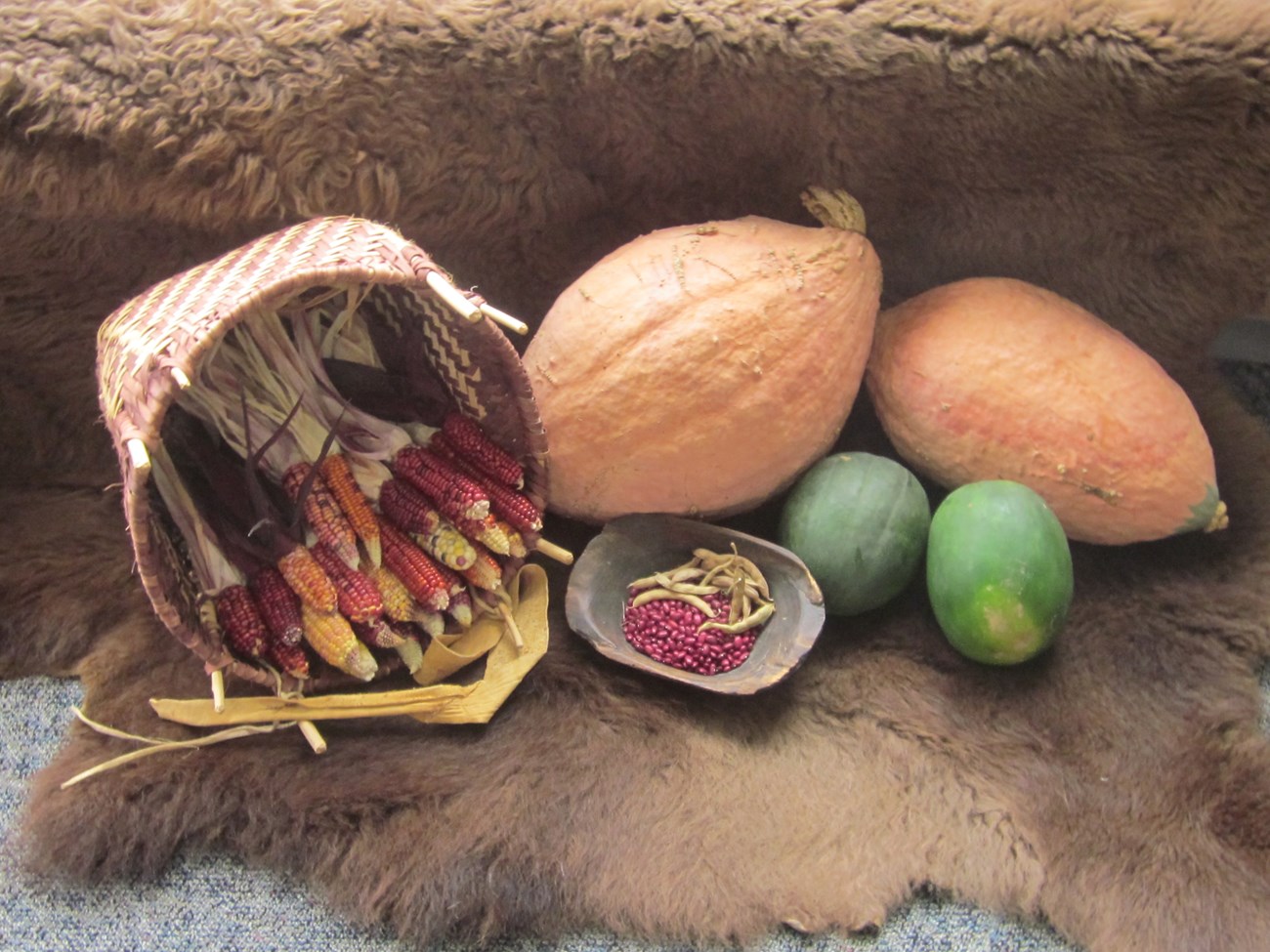
KNRI Staff 2018 2020 Downloadable Garden Guide 
Gardening ToolsMany modern tools can find a relative in the tribes' gardens. Rakes were made from deer antlers and gardening hoes were made with bison scapula, also known as the shoulder blade. While a hand trowel is similar to a digging stick, digging sticks had more functions including poking holes for planting seeds, unearthing particularly tough weeds, and making post holes for fences. 
KNRI Staff 2010 The CropsCorn, squash, and beans; this combination known as the Three Sisters is common with tribes across the country, and the tribes from the Five Villages are no different. These foods were easily preservable and good for trade. Seeds from the best crops were saved to be planted the next year. 
KNRI Staff 2007 Protecting the FieldsProtecting the fields was hard work. Between animals and birds, raids from other tribes, and even little boys within the villages sneaking in to steal a cob, the women had to devise several ways to defend their crops. 
Plants at Knife River
Lewix Flax or Blue flax flowers found at Knife River Indian Villages 
The Hidatsa
A George Catlin painting of a native american man in regalia. 
Citizen Science Opportunities
Knife River Indian Villages NHS needs your help to collect data on the biodiversity of the park's mixed-grass prairie ecosystem. |
Last updated: August 21, 2020
